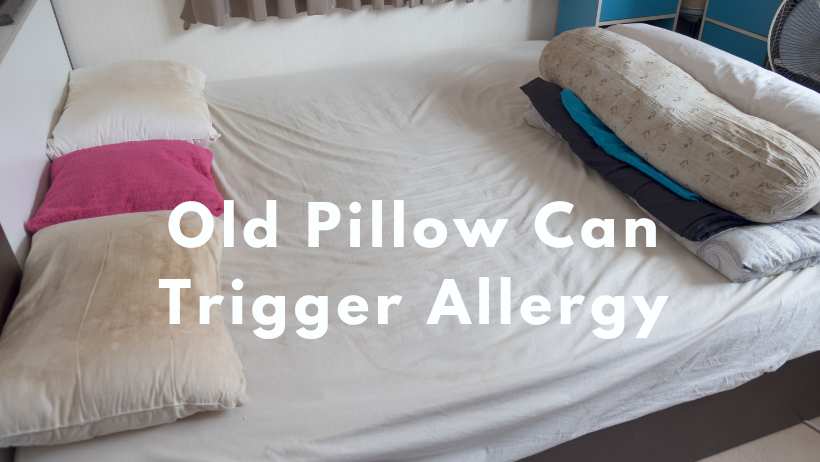Our pillows are not just a source of comfort. These can contain a lot of foreign particles in them. The older your pillow is, the more likely it is to cause allergies. Old pillows are more comfortable because we are used to them, and they always seem fluffier. More people would rather have two old pillows than a new one. Old pillows are also teeming with dust mites, which can cause a lot of allergies.

Though your old pillow can trigger an allergy, you can buy hypoallergenic pillows. However, most pillows that claim to be hypoallergenic fall a little short of their claims. Here are some essential things you need to know about old pillows.
Allergies Triggered Through Pillows
Whether your pillow is made of down or natural fibers, it can collect a lot of dust over the years, and dust attracts dust mites. Dust mites can quickly move from your pillow to your skin, causing allergic reactions. Other microbes, such as bacteria, viruses, and fungi, such as mold, could also grow into the pillows. These can trigger allergies such as contact dermatitis, eczema, asthma, and rhinitis. The microbes residing in the fibers of the cushions may mix into the air, and when you inhale them, these can cause additional allergies and health complications.
Hypoallergenic Pillows
Hypoallergenic pillows are usually made of synthetic polyester and poly-fill material. People allergic to birds or animals should avoid using pads with down as filling material. Cotton pillows attract dust mites and mold, especially in warm and humid weather conditions, so always buy pillows that contain hypoallergenic filling materials and come with hypoallergenic encasings. Hypoallergenic pillows improve sleep quality and reduce nighttime allergy symptoms. The slight change makes a big difference in your overall well-being.
Reducing the Chances of Allergies
Though old pillows can cause a lot of allergies, there are ways in which that can be reduced. Here are some things you can do to ensure your pillows don’t cause problems.
1. Check Pillow Materials
Before buying your pillows, always read the labels to find the material the cushions are made of. Polyester and foam pillows are usually better for people prone to allergies. Knowing the materials helps you make an informed choice and avoid potential allergens.
2. Maintain Proper Ventilation
Ensure that your rooms have proper ventilation, and open your windows occasionally so your bedding can be aired. Once a week, remove the pillowcases and just put your pillows out in the sun for a few hours. Sunlight is a natural disinfectant; your pads will remain clean and free of mold and bacteria. A well-ventilated room significantly reduces allergen buildup.
3. Regularly Replace Pillows
Change your pillows every 6-8 months, especially if you are prone to contact dermatitis and similar allergies. Regular replacement ensures you’re not exposed to accumulated allergens over time.
4. Clean and Disinfect Pillows
Wash or dry clean your pillows if you are fond of them and don’t want to change them so frequently. Another great way to ensure your pads remain free of allergies is to wrap them in a plastic bag and keep them in a freezer for a few hours. This helps in killing off bacteria and viruses. Consistent cleaning also prolongs the life of your pillows and keeps them allergen-free.
5. Opt for Organic Cotton Pillows
If you want to buy organic cotton pillows, ensure that the cotton is 100% organic. Cotton pillows should be washed regularly to ensure there are no dust mites in them. Organic cotton is free from pesticides and chemicals. It also reduces the chances of skin irritations.

1 Comment
This was not only enlightening but alarming .thanks for the information.